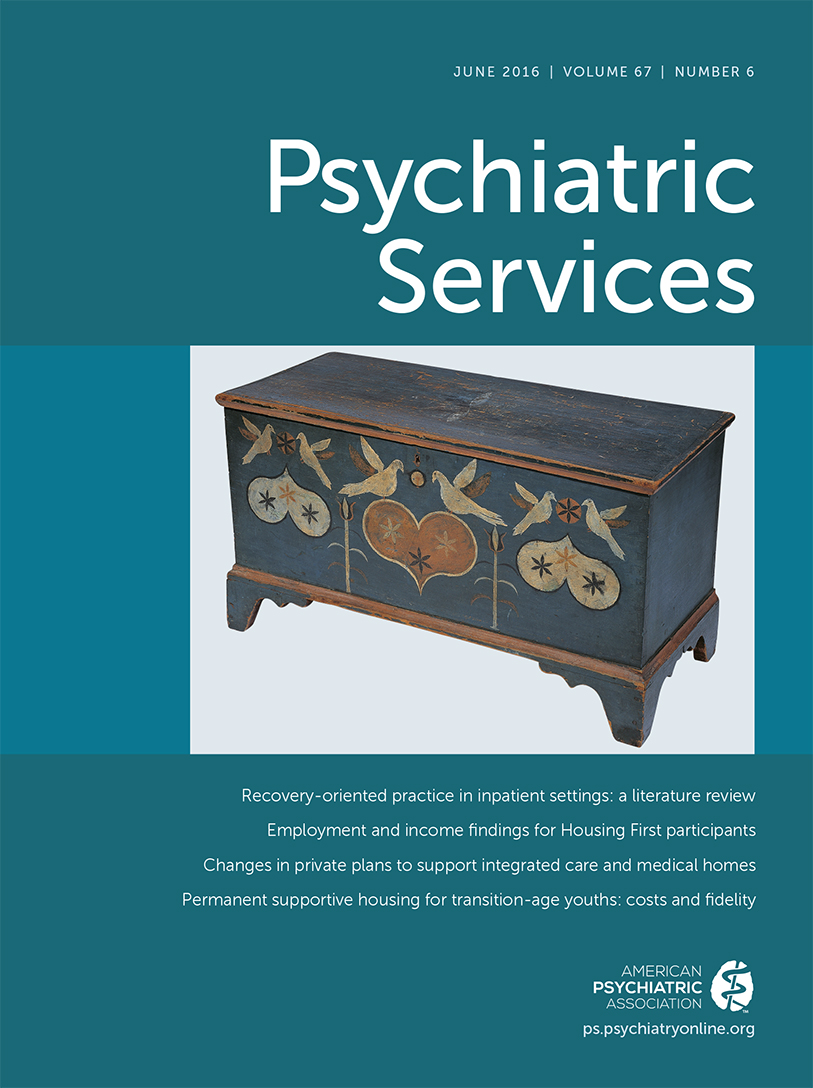Permanent Supportive Housing for Transition-Age Youths: Service Costs and Fidelity to the Housing First Model
Abstract
Objective:
Permanent supportive housing (PSH) programs are being implemented nationally and on a large scale. However, little is known about PSH for transition-age youths (ages 18 to 24). This study estimated health services costs associated with participation in PSH among youths and examined the relationship between fidelity to the Housing First model and health service outcomes.
Methods:
Administrative data were used in a quasi-experimental, difference-in-differences design with a propensity score–matched contemporaneous control group to compare health service costs among 2,609 youths in PSH and 2,609 youths with serious mental illness receiving public mental health services in California from January 1, 2004, through June 30, 2010. Data from a survey of PSH program practices were merged with the administrative data to examine changes in service use among 1,299 youths in 63 PSH programs by level of fidelity to the Housing First model.
Results:
Total service costs increased by $13,337 among youths in PSH compared with youths in the matched control group. Youths in higher-fidelity programs had larger declines in use of inpatient services and larger increases in outpatient visits compared with youths in lower-fidelity programs.
Conclusions:
PSH for youths was associated with substantial increases in costs. Higher-fidelity PSH programs may be more effective than lower-fidelity programs in reducing use of inpatient services and increasing use of outpatient services. As substantial investments are made in PSH for youths, it is imperative that these programs are designed and implemented to maximize their effectiveness and their impact on youth outcomes.



